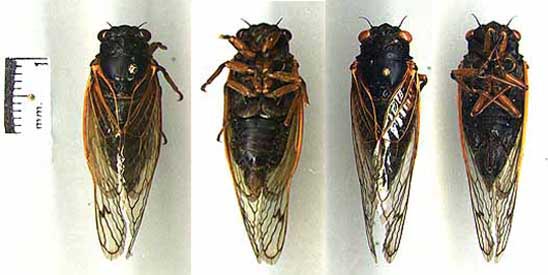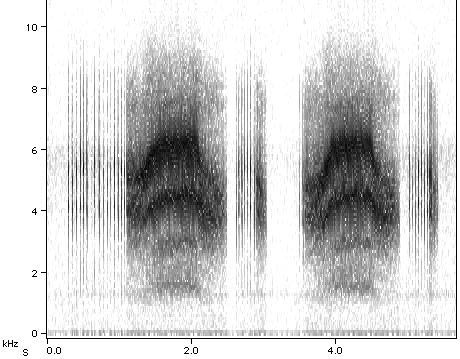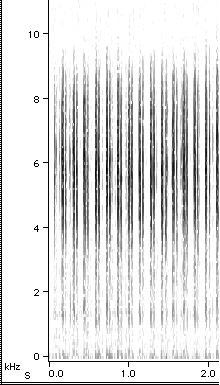Morris’ 17-year cicada

Usually smaller than M. septendecim. No orange coloration in front of the wing insertion behind the eye. Generally, abdomen entirely black.
You can rotate the 3-D models of M. cassini below to see them from all angles.
In some locations (especially at the far western end of the species’ range), individuals may have weak ventral yellow-orange marks; if present, these tend to be faded and rarely form complete stripes. These atypical M. cassini individuals may be difficult to distinguish from M. septendecula if the calling song is not available. Some M. tredecassini from the western part of their range have also been reported to have weak orange abdominal markings.
You can rotate the 3-D models of such atypical M. cassini below to see them from all angles.
Regardless of appearance, calling song phrases consist of a series of ticks followed by a shrill buzz. Males of M. cassini and its close 13-year relative M. tredecassini sometimes synchronize their calls and flights all at once, a display that has been likened to a “giant game of musical chairs”. Scale is 1 cm long.
Margaretta Hare Morris discovered this species in the first half of the 19th Century (Read more about her here). James Coggswell Fisher formally named the species in 1851 to honor his ornithologist friend, John Cassin. Fisher spelled the species epithet “cassinii.” However, in their 1962 monograph, Alexander and Moore (1962) spelled it “cassini.” Either spelling is acceptable (Marshall 2022).
General information about the signals of this species is included here.
Magicicada cassini chorus:
Magicicada cassini songs:

Courtship I/Calling song

Courtship II song

Courtship III song
Approximate range
In the map below, cicada symbols are verified records in our database as of 10 March 2025. This map may not be reproduced without written permission.